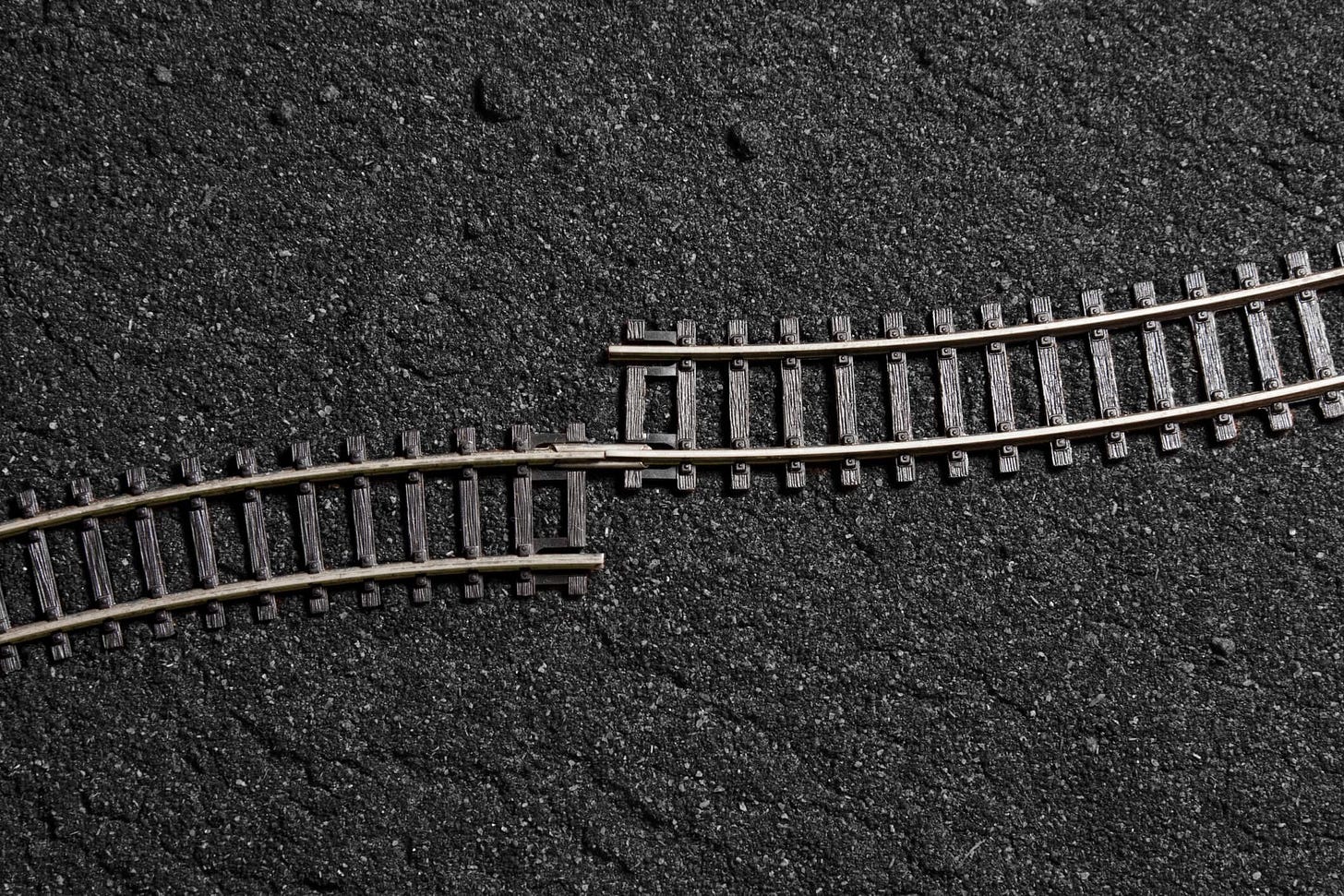Full-Bodied Crookedness
Let’s workshop this narrative poem detailing a young man’s fixation with his bodily misalignment, a misalignment whose scope he realizes to his horror keeps growing wider--even to existential extremes
scent of the day: Sultan Vetiver, by Nishane (perhaps the most vetiver-focused piece of perfumery to date, here we get four types rolled into one: zesty and clean Brazilian vetiver; cedary and camphorous Javanese vetiver; earthy and smokey Haitian vetiver; boozy and peppery bourbon vetiver—the result an unapologetic beast that opens extremely grassy and mothball clean like a blinding summer day (almost screechy were it not for the restraining weight of honeysuckle honey) but then turns ever cloudier as the subtle bergamot and anise fades, psilocybin-green grass time-lapsing into hay as smokey woods and carrotlike facets come into greater prominence along with some skanky suede)
Full-Bodied Crookedness The crookedness of his nose, that he detected early on: the left nostril seated lower than the right, an imbalance like that of Luke and Jabba. Toddler photos confirmed the issue was congenital. A practice took root: smooshing the low nostril up, in American-style over compensation, way higher than symmetry—that push of manifest destiny being, in his mind, the only hope at resetting the set point. On the pretense of itchy-nose allergies, he carried out that oinker-snout warpery on the bus, in math, gym class. Militaristic scrutiny in the mirror, desperate to notice some improvement, opened him (with the help of weed) to the panoptic facial horror. The left side was smunched: jaw collapsed like a November jack-o-lantern; right eye higher than the left. Practices took root: his right hand pulling down as the left pushed up for a seismic shearing; his left hand stretching the left mandible as the right hand braced the zygomatic process. Yet however long locked in overcorrecting rage, the face always oozed back home. To hide the crookedness at least from new eyes (well, at least new eyes that were not tuned in by marijuana) his imperialism broadened to shaving more hair away from the left swath of his forehead hairline, macheting through deep suspicion that the campaign only served to make his crookedness more pronounced. After all, had not his indigenous hairline lived in long harmony with all the crooked traits, lending the whole package a consistency potentially disrupted by local doctoring? It was while on the carpet stretching his hamstrings in a forward bend that he realized the nightmarish gestalt had an even larger scope. Straightened legs made it clear that his left foot extended farther than his right. A right shoe with over an inch-more sole than the left would be needed to offset the extra weight his left had been bearing. A practice took root: standing, his left foot on the King James Bible and letting his right, double ankle-weighted, hang while he watched TV. It was clear to him, by this point, that the problem cut to his core—infected his code. The right ribcage was not just higher than the left but stuck out more on the perpendicular. That was why while sleeping on his right it felt as if the left ribcage would bust from the sternum and slide under the right ribs like one playing card under another. His routine to offset the jutting side was to go onto his stomach and, in a superman, lean his weight more to the right. Like those who know that merely firing “bad apples” is no cure (in reasonable time) for a structural problem, he suspected his treatments were too targeted to cure what plagued the whole. And so he resigned himself to fantasy—shielding him, for a time, from the sense that his misalignment might reach into the existential: an iron-maiden type case (perhaps not minus the spikes) that would torque each inch of him into proper place with supercomputer precision. “Take that, bitch!”







Full-Bodied Crookedness delves into the psychological and physical ramifications of the narrator's obsessive self-perception, capturing the relentless pursuit of bodily symmetry and the attendant sense of futility. The poem addresses themes of body dysmorphia, anxiety, and the intersection between the physical and existential, offering a layered exploration of self-image that spirals from an early awareness of physical imperfection into a broader, all-encompassing fixation.
The narrator's awareness of his physical "crookedness" begins early in life, specifically with his nose. The metaphorical comparison between his nostrils' asymmetry and "Luke and Jabba"—characters symbolizing the moral and physical extremes in Star Wars—immediately sets the tone for the poem. This exaggerated contrast between good and evil, hero and grotesque villain, symbolizes the narrator’s perception of his own bodily imbalance. His desire to "reset the set point" through American-style overcompensation reflects a cultural critique of perfectionism and the extremes one is willing to pursue in the face of perceived inadequacy.
The poem moves from local observations about the nose to a more militaristic obsession with other features, as the narrator scrutinizes his face with increasing intensity. Weed enhances his paranoia, opening him to a deeper "panoptic facial horror." The imagery of his face collapsing "like a November jack-o-lantern" suggests the fragility of his self-perception, as if his identity, like a decaying pumpkin, is subject to irreversible forces of decay and deformation. His bodily interventions—stretching his mandible, warping his jaw—become ritualistic, yet they never succeed, as the face "oozed back home," an apt metaphor for the inescapability of one's essential physical reality.
As the narrative continues, this obsessive compulsion expands beyond the face. The "imperialism" of his interventions broadens to include his hairline, where he begins shaving away parts of his scalp in the hopes of masking the crookedness. The poem’s use of terms like "imperialism" and "campaign" evokes a military strategy of control, underscoring the narrator’s self-destructive attempts to conquer his own body. Yet these interventions only worsen the problem, revealing a deeper tension between perceived self-improvement and the worsening consequences of obsessive control.
The moment of realization on the carpet, when the narrator notices his legs are unequal, marks a turning point where the body’s crookedness infects the core of his being. His compensatory behavior of standing with one foot on a Bible—symbolizing the weight of moral and existential struggle—speaks to the spiritual and psychological burden that accompanies his physical preoccupation. His overcorrection becomes metaphysical, suggesting that his sense of misalignment is not merely physical but reaches into the existential. The line “infected his code” ties bodily asymmetry to a deeper systemic failure, one that encompasses both mind and body, leaving him trapped in an endless cycle of perceived flaws and failed fixes.
The poem closes with a resignation to fantasy. The idea of a “supercomputer” iron-maiden that could force his body into perfect alignment illustrates the dark fantasy of a final, ultimate correction—a violent, mechanistic process that reflects the narrator’s underlying desire for order at any cost. The imagery of the iron-maiden—an ancient torture device—emphasizes the brutality inherent in this quest for bodily perfection, suggesting that the narrator’s desire for symmetry is itself a form of self-torture. His triumphant exclamation, “Take that, bitch!” conveys the ultimate irony: the victory, even if achieved, would be hollow, a victory over a body that resists being reshaped by sheer will.
In its entirety, Full-Bodied Crookedness is a meditation on the psychological toll of body dysmorphia and the lengths to which one might go in the futile pursuit of physical perfection. Through its grotesque imagery, militaristic language, and existential underpinnings, the poem captures the obsessive, self-destructive nature of perfectionism and the deep existential anxiety that often lies beneath.
body dysmorphia, obsessive perfectionism, self-image, physical asymmetry, existential anxiety, self-destructive behavior, body fixation, neurotic self-perception, American perfectionism, grotesque imagery, body modification